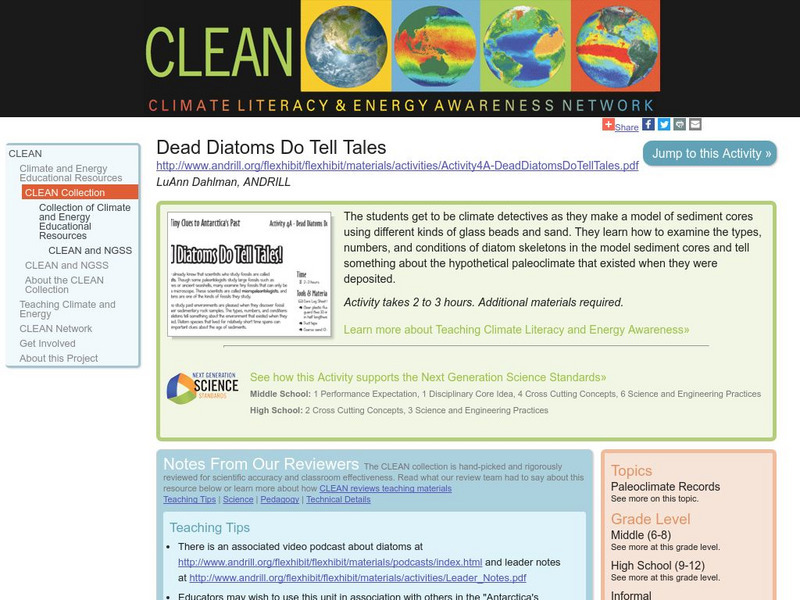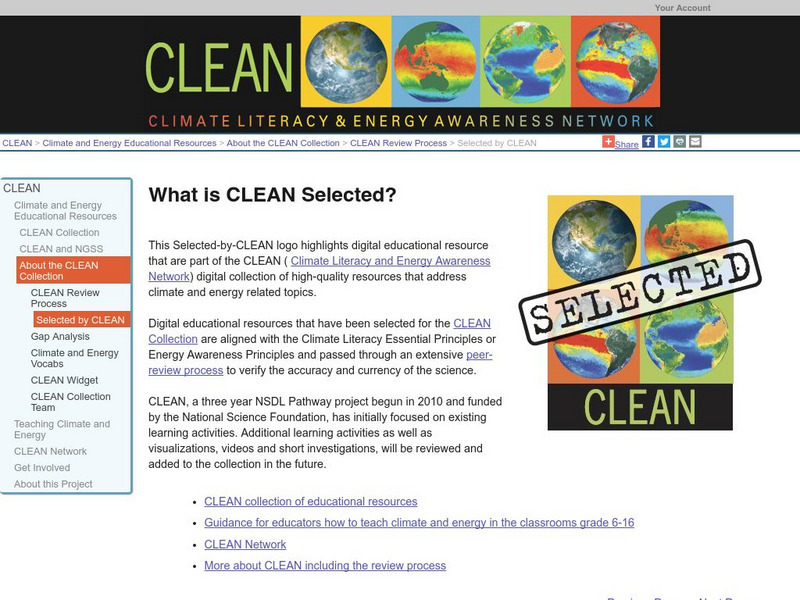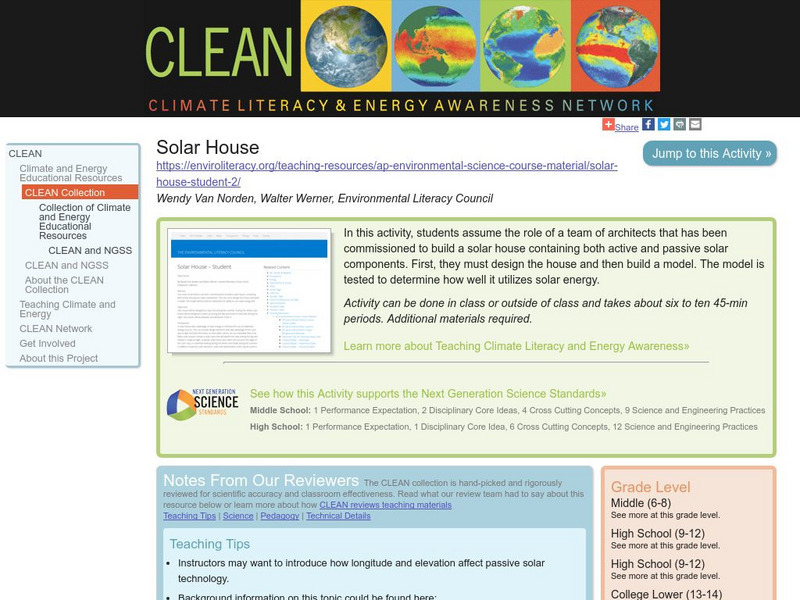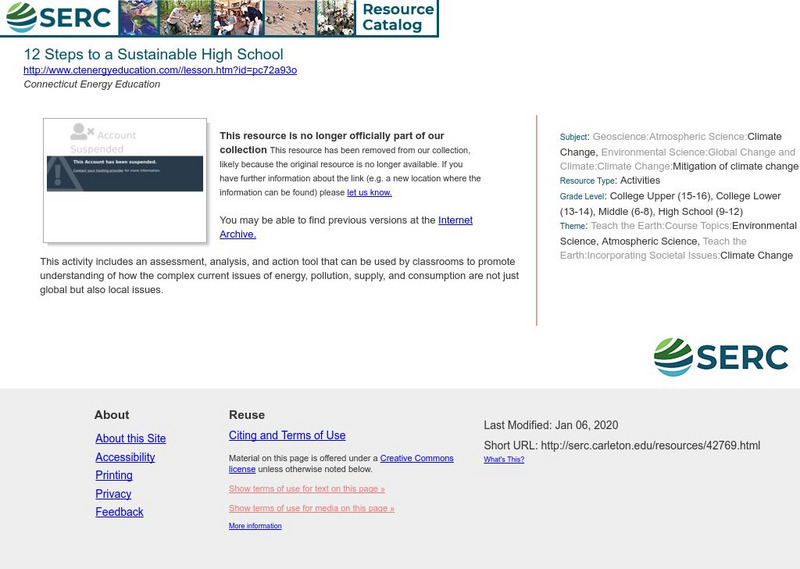Climate Literacy
Clean: Compact Fluorescent Light Bulbs Cost Benefit Analysis
This analysis activity allows young scholars to calculate electrical usage in home lighting, and create a cost-benefit analysis for cost and energy savings by replacement of incandescent light bulbs with compact fluorescent or LED light...
Climate Literacy
Clean: Dead Diatoms Do Tell Tales
Students take on the role of climate detectives in this climate investigation. Teams make a model of sediment cores using glass beads and sand, study the core samples, and tell something about the hypothetical paleoclimate that existed...
Climate Literacy
Clean: El Nino and It's Impact on the World
The activity takes a hands-on approach to understanding El Nino by physically showing and feeling this weather phenomenon. It consists of an El Nino demo as well as an experiment to be conducted by the young scholars themselves.
Climate Literacy
Clean: Effects of Increased Co2 in the Air on Seawater and Distilled Water
Students perform an experiment comparing the impacts of CO2 on salt water and on fresh water. In a short demonstration, students examine how distilled water and seawater are affected differently by increasing carbon dioxide in the air.
Climate Literacy
Clean: Climate: A Balancing Act
This activity allows students to explore how Earth's energy balance is regulating climate.
Climate Literacy
Clean: Zero Energy Housing
Students investigate passive solar building design with a focus solely on heating. Then they design and build their own model houses, and test them for thermal gains and losses during a simulated day and night.
Climate Literacy
Clean: Solar Water Heater
Student teams design and build solar water heaters to capture energy in the form of solar radiation and convert it to thermal energy. Once the model devices are constructed, students perform efficiency calculations and compare designs.
Climate Literacy
Clean: Investigating Weather and Climate With Google Earth
In this activity, students will investigate the change in global temperature by analyzing data on Google Earth for 13 different cities. Students will then interpret the climate patterns for those cities to make conclusion about the...
Climate Literacy
Clean: Paleoclimate Reconstruction Lab
A lesson plan for an activity where young scholars relate weather and climate patterns to understand annual sediment deposition. During the lesson plan students reconstruct climates from the past 300 years using lake sediment data....
Climate Literacy
Clean: What Happens to Ice in Water?
Students investigate the properties of water in the ice and liquid phase as it relates to convection in the ocean and density driven circulation, and ultimately the climate.
Climate Literacy
Clean: Climate Change and the Oceans
Students discover the role that the oceans play in climate change, and how climate change affects the oceans. It is lesson eight in a nine-lesson module "Visualizing and Understanding the Science of Climate Change."
Climate Literacy
Clean: Investigating El Nino Using Real Data
A sequence of five online activities focusing on the El Nino climate variability. The focus of the activities is on accessing and manipulating real data to help students understand El Nino as an interaction of Earth systems.
Climate Literacy
Clean: Climate Feedback Loops
This is the seventh of nine lessons from a student learning module called "Visualizing and Understanding the Science of Climate Change." This lesson addresses climate feedback loops and how these loops help drive and regulate Earth's...
Climate Literacy
Clean: Public Service Announcement (Psa) for Grades 6 12
Students study climate change and create a Public Service Announcement that communicates their understanding of the science, raises awareness about climate change, and motivates people to take action.
Climate Literacy
Clean: How Does Melting Ice Affect Sea Level?
Students investigate how sea levels might rise when ice sheets and ice caps melt by constructing a pair of models and seeing the effects of ice melt in two different situations.
Climate Literacy
Clean: Climate Science Digital Resources
A digital collection of high-quality lesson resources that address climate and energy related topics.
Climate Literacy
Clean: Do Scientists Agree About the Causes of Climate Change?
Young scholars follow a four-step process to debunk the myth regarding scientific consensus on climate change.
Climate Literacy
Clean: Climate Literacy & Energy Awareness Network: Quiz
Take this energy awareness quiz.
Climate Literacy
Clean: Solar House
Students in teams of architects are challenged to build a solar house, containing both active and passive solar components. They design the house, build a model, and test it to determine its ability to use solar energy efficiently.
Climate Literacy
Clean: Climate Change and Disease
Students research the relationship between hosts, parasites, and vectors for common vector-borne diseases and evaluate how climate change could affect the spread of disease.
Climate Literacy
Clean: 12 Steps to a Sustainable High School
This activity includes an assessment, analysis, and action tool that can be used by classrooms to promote understanding of how the complex current issues of energy, pollution, supply, and consumption are not just global but also local...
Climate Literacy
Clean: Colorado River Supply
Students examine available data of water in the Colorado River Basin, study the possible consequences of changes to various user groups, and suggest solutions to adapt to these changes.
Climate Literacy
Clean: Energy Enigma
Students act as detectives and research clues to uncover energy facts. This cooperative learning activity accesses language arts and critical thinking skills as students try to conceal their own energy source while guessing the opposing...
Climate Literacy
Clean: Earth's Albedo
This engaging activity introduces students to the concept of albedo and how it relates to Earth's energy balance. They measure the albedo using maps, data tables, and a shaker filled with popcorn kernels. Then, they estimate the Earth's...























